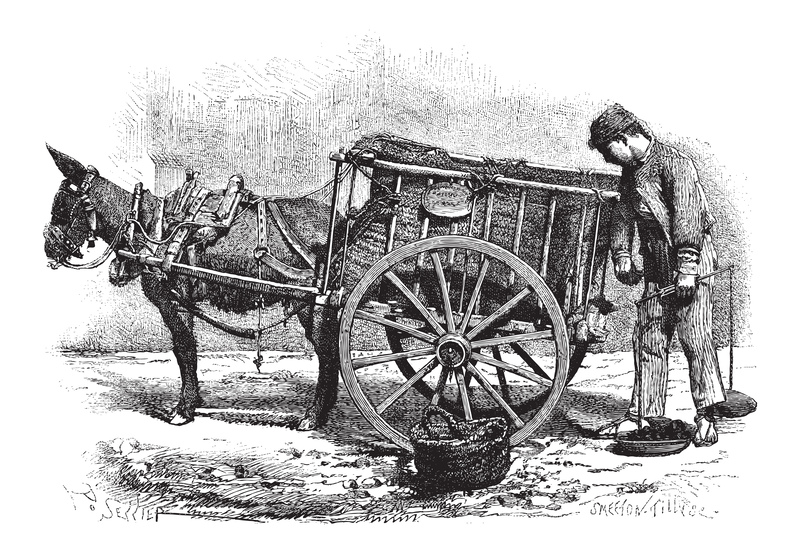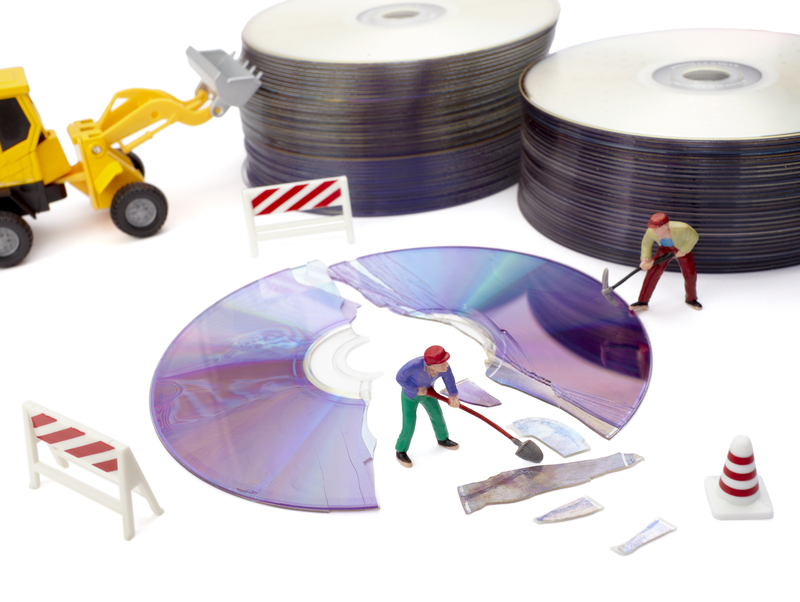Exploring Sustainable Solutions for Packaging and Cardboard Disposal
Packaging waste and cardboard disposal are pressing environmental issues in our rapidly growing consumer society. As e-commerce booms and global commerce flourishes, the demand for packaging materials such as cardboard continues to surge. Without sustainable management, these materials contribute to landfill overflow, resource depletion, and increased carbon footprints.
This comprehensive article explores innovative, eco-friendly solutions to packaging and cardboard waste, empowering both businesses and individuals to make impactful changes. Discover the latest trends, actionable steps, and inspiring success stories as we delve into the world of sustainable packaging and responsible disposal methods.

The Environmental Impact of Packaging Waste
Packaging has become essential for product protection, transportation, and branding. However, the flip side is the accumulation of billions of tonnes of packaging waste annually. Cardboard is a prominent material used, often prized for its recyclability--but the scale of its use poses significant challenges.
Key Environmental Concerns Associated with Cardboard Packaging
- Resource Extraction: Cardboard is made primarily from wood pulp, resulting in deforestation and habitat loss if not sourced responsibly.
- Water & Energy Use: The manufacturing process requires substantial water and energy, contributing to pollution and greenhouse gas emissions.
- Waste Generation: Improperly managed packaging waste fills up landfills, where decomposition emits methane--a potent greenhouse gas.
- Recycling Challenges: Contaminated or composite cardboard (e.g., boxes with wax or plastics) is difficult to recycle, reducing overall efficiency.
With these challenges in mind, implementing sustainable solutions for packaging and optimizing cardboard waste disposal are crucial for a healthier planet.
Eco-Friendly Packaging Alternatives
Manufacturers and businesses are increasingly turning to sustainable packaging innovations. These solutions aim to reduce environmental impact, lower resource consumption, and support a circular economy.
Biodegradable and Compostable Packaging
Biodegradable packaging materials break down naturally, minimizing landfill buildup. Common examples include:
- Plant-based plastics (bioplastics) derived from cornstarch or sugarcane
- Mushroom packaging, created from agricultural waste and mycelium
- Bagasse packaging, made from sugarcane fiber
- Seaweed packaging, an emerging alternative celebrated for its rapid decomposability
Recycled and Recyclable Cardboard
Post-consumer recycled cardboard drastically cuts the need for virgin pulp, saving trees and resources. By designing cardboard packaging to be easily separated, cleaned, and recycled, companies can enhance recovery rates and promote a circular packaging life cycle.
Tips for Consumers:
- Choose products packaged in recycled or recyclable materials.
- Avoid packaging with unnecessary plastic coatings, foils, or laminates.
- Support businesses with transparent, eco-conscious packaging policies.
Minimalist and Reusable Packaging
Source reduction means designing packaging with just the right amount of material required to maintain durability and protection. This approach not only cuts waste but also reduces costs and energy consumption.
- Encourage refillable or returnable packaging systems.
- Select products with packaging designed for multiple uses.
- Engage with zero-waste grocery stores or retailers offering bulk purchase options, reducing single-use cardboard boxes and bags.
Sustainable Cardboard Disposal Techniques
The key to sustainable cardboard waste management is creating a closed loop that diverts material from landfill back into the production cycle. Here's how individuals, businesses, and communities can participate.
Efficient Recycling Practices
Cardboard recycling is highly efficient and environmentally beneficial. To ensure the best results, follow these steps:
- Clean Before Recycling: Remove any food residue, grease, or plastic liners, as contamination hinders processing and can spoil entire recycling batches.
- Flatten Boxes: Breaking down boxes saves space in recycling bins, reduces transport emissions, and makes processing easier.
- Separate Materials: Keep cardboard distinct from other recyclables, such as plastics or metals, to prevent contamination.
Composting Cardboard at Home
Clean, uncoated cardboard can be a valuable addition to compost bins and piles. When shredded and combined with organic waste, cardboard provides carbon ("brown" material) to balance nitrogen-rich kitchen scraps ("green" material).
Composting Tips:- Tear or shred cardboard into small pieces before adding to compost.
- Avoid glossy, colored, or heavily printed boxes, as inks or coatings may contain chemicals.
- Maintain a good green-to-brown ratio for optimal decomposition.
Creative Reuse and Upcycling
Cardboard upcycling encourages transforming waste into useful items. Popular projects include:
- DIY storage solutions and organizers
- Gardening aids, such as sheet mulching or seed trays
- Children's crafts and toys
- Pet playhouses and scratchers
Inspiring creative reuse not only diverts waste but stimulates innovation and community engagement.
Corporate Responsibility and Industry Initiatives
Many leading companies now recognize their environmental responsibility--that sustainable packaging and cardboard waste management are critical to long-term success.
Case Studies and Innovations
Retail Leaders:- IKEA has committed to using only renewable or recycled materials in all products and packaging by 2030, with a focus on eliminating single-use plastics.
- Amazon launched the Frustration-Free Packaging program, encouraging minimal, recyclable, and certified packaging across their supply chain.
- Major manufacturers invest in water-based inks and biodegradable coatings to produce fully compostable cardboard packaging.
- Development of fiber-based packaging that replaces plastic inserts and wraps with easily recycled paper alternatives.
Regulatory Drivers
Governments are accelerating change with regulations like:
- Extended Producer Responsibility (EPR): Making companies responsible for the entire lifecycle of their packaging.
- Bans or levies on single-use plastics and non-recyclable materials.
- Mandates for recycled content in all packaging by certain dates.
These initiatives encourage research, development, and large-scale adoption of sustainable packaging solutions across industries.
Challenges in Transitioning to Sustainable Packaging and Cardboard Disposal
Despite abundant solutions, several roadblocks can slow the shift to sustainable packaging systems:
- Cost Concerns: Innovative eco-friendly materials can carry higher upfront costs compared to conventional solutions.
- Supply Chain Complexity: Sourcing sustainable materials and integrating new processes can be a major operational challenge, especially for small businesses.
- Contamination: Single-stream recycling systems often lead to contamination and lower recovery rates for cardboard and other recyclables.
- Consumer Awareness: Confusion about which materials are recyclable or compostable hinders proper disposal practices.
Overcoming Barriers
Solutions include:- Government incentives to subsidize sustainable packaging transitions
- Education campaigns targeting both businesses and consumers about proper disposal and recycling habits
- Investment in new processing technologies to handle mixed materials and contamination
The Future of Cardboard and Packaging: A Circular Economy Vision
Creating a sustainable future for packaging and cardboard disposal involves embracing the circular economy--a system focused on keeping resources in use for as long as possible.
- Designing for Reuse: Prioritize materials and structures that can be reused multiple times before recycling or composting.
- Enhancing Material Recovery: Expand and modernize recycling infrastructure to handle complex and composite packaging.
- Promoting Biobased and Regenerative Materials: Support innovation in plant-derived packaging that can fully re-enter natural systems as compost.
- Consumer Empowerment: Equip individuals with knowledge and facilities to properly sort and dispose of all packaging types.
Collaboration is key--government, industry, and consumers must work together to advance green solutions and foster a culture of sustainability.

Simple Steps for Individuals: Making a Big Difference
- Choose Sustainable Brands: Look for businesses leading the pack with responsible packaging choices.
- Reduce & Reuse: Minimize consumption, buy in bulk, and repurpose boxes for home organization or shipping.
- Recycle Right: Flatten, clean, and sort cardboard to maximize success at recycling centers.
- Compost: Add suitable cardboard to your home compost or seek out municipal organics collection programs.
- Spread the Word: Share knowledge about sustainable packaging and effective disposal within your community or workplace.
Conclusion: Toward a Greener Packaging Future
Exploring sustainable solutions for packaging and cardboard disposal is no longer an option--it's a necessity for a habitable planet. Whether you're a consumer, retailer, or policymaker, your choices matter. By embracing eco-friendly packaging materials, prioritizing recycling and composting, and fostering greater environmental awareness, we can collectively build a resilient future.
If your business or household is seeking to lower its environmental impact, start with packaging--explore recyclable, biodegradable, and reusable options. Implement efficient cardboard disposal practices, and educate those around you. Together, we can transform the way we produce, consume, and manage packaging, ensuring that tomorrow's world is cleaner, healthier, and more sustainable for all.
Remember: Every box recycled, every package redesigned, and every informed choice brings us one step closer to a zero-waste circular economy--where packaging does good rather than harm.